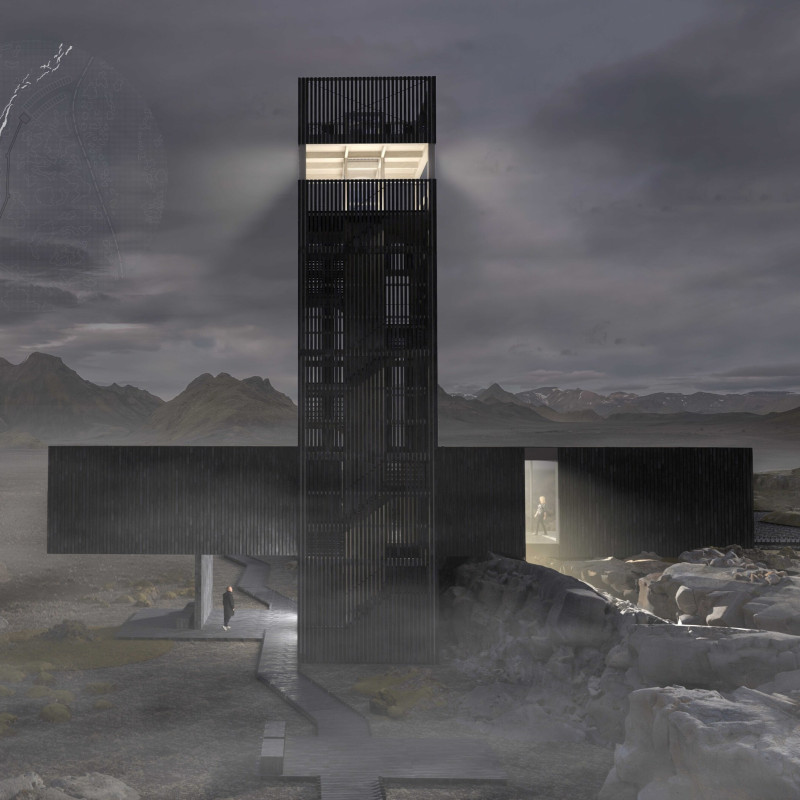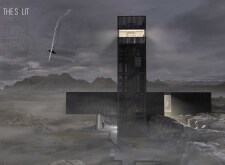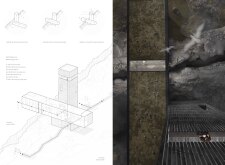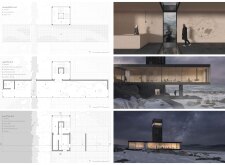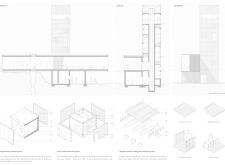5 key facts about this project
The main function of the architecture is to serve as a versatile gathering place that facilitates community interaction. It is designed to accommodate events ranging from workshops to social gatherings, promoting a sense of connection among its users. The layout reflects a deep understanding of social dynamics, incorporating both open areas for large groups and intimate spaces for smaller interactions. This duality encourages a fluid experience, inviting individuals to move seamlessly between various activities and engagements.
The design features a distinctive façade that responds to its surroundings while also making a statement about the building's purpose. Materials selected for the exterior include locally sourced wood, glass, and steel, allowing the building to harmonize with the natural environment while offering a modern touch. The use of glass enhances visibility and light, creating a welcoming atmosphere that draws visitors inside. The wooden accents provide a warmth that contrasts with the sharper lines of the steel elements, reflecting a balance between natural and industrial aesthetics.
In terms of architectural details, the project showcases a variety of unique design approaches. For instance, the incorporation of green roofs and walls demonstrates a commitment to sustainability. These features not only improve the building's energy efficiency by regulating temperature but also enhance biodiversity and provide aesthetic value. Rainwater harvesting systems are integrated to support landscape irrigation, emphasizing water conservation and reducing reliance on municipal systems.
Significant attention has been paid to the interior layout as well, with spaces designed to adapt to varying needs. Modular furnishings are featured throughout, allowing for quick reconfiguration based on different events and user requirements. This flexibility ensures that the space remains relevant over time, catering to evolving community needs and preferences.
Furthermore, the project emphasizes accessibility, with features such as wide pathways, ramps, and tactile surfaces ensuring that all users, regardless of ability, can fully engage with the environment. Natural light pours into the interior through strategically placed skylights and large windows, promoting a cheerful atmosphere that complements the building's function as a community hub.
Another striking aspect of this architectural design is its relationship with the landscape. The layout thoughtfully considers topography and views, with terraces and outdoor areas designed to encourage outdoor activities and interactions. Landscaping is not merely an afterthought; it is intricately woven into the design, featuring native plantings that require minimal maintenance and promote local biodiversity.
In exploring this architectural project further, readers are encouraged to delve into the architectural plans, sections, and design schemes to gain deeper insights into its innovative solutions and thoughtful considerations. The project exemplifies how architecture can serve not just as a shelter, but as a catalyst for community engagement and environmental stewardship. Understanding these elements allows for an appreciation of the careful craftsmanship and intentionality behind the design, reflecting a vision that prioritizes both humans and nature. Engaging with this project presentation promises a richer comprehension of how modern architecture can reflect and respond to the complexities of community life.


